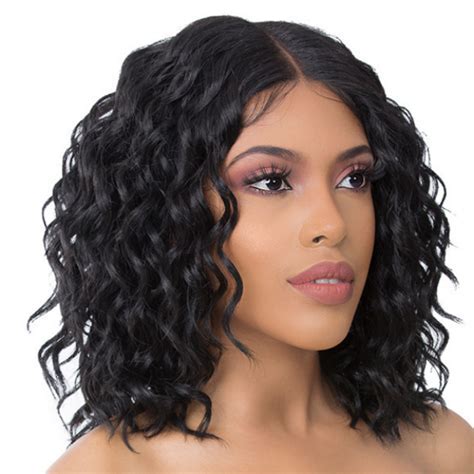Introduction
Lace front wigs are an increasingly popular way to achieve a natural-looking and seamless hair transformation. However, securing these wigs requires a reliable adhesive that can withstand daily wear and tear. In this comprehensive guide, we delve into the world of lace front wig adhesives, exploring their types, applications, and essential considerations to ensure a flawless hold.

Types of Lace Front Wig Adhesives
1. Water-Based Adhesives
- Easy to apply and remove
- Gentle on skin and hair
- Can be used for short-term wear (3-5 days)
2. Alcohol-Based Adhesives
- Stronger hold than water-based adhesives
- Can last up to 2 weeks
- May irritate sensitive skin
3. Solvent-Based Adhesives
- The strongest type of adhesive
- Waterproof and sweat-proof
- Can cause skin irritation and damage if overused
Choosing the Right Adhesive
The choice of adhesive depends on individual needs and preferences. Consider the following factors:
1. Skin Sensitivity: Sensitive skin should opt for water-based adhesives to minimize irritation.
2. Desired Duration: Water-based adhesives are suitable for short-term wear, while alcohol-based and solvent-based adhesives provide longer-lasting hold.
3. Hair Texture: Solvent-based adhesives are ideal for coarse or thick hair that requires a stronger grip.
4. Activity Level: Choose waterproof and sweat-proof adhesives for active lifestyles.
How to Apply Lace Front Wig Adhesive
1. Cleanse and Protect: Wash your scalp and hair with a mild shampoo to remove oils and product buildup. Apply a skin barrier protectant to prevent irritation.
2. Apply the Adhesive: Use a thin layer of adhesive around the perimeter of the wig cap. Avoid applying directly to the lace.
3. Secure the Wig: Carefully align the wig on your head and press it firmly into place. Use a wig press or a soft brush to blend the lace into your natural hair.
Removing Lace Front Wig Adhesive
1. Use a Remover: Apply a specialized wig adhesive remover to the edges of the wig. Avoid using harsh chemicals or acetone.
2. Lift and Peel: Gently lift the wig from one side and peel it away from your head while applying pressure to the adhesive with a wide-toothed comb.
3. Cleanse and Condition: Wash your scalp and hair again to remove any remaining adhesive residue. Condition your hair to restore moisture and prevent damage.
Tips for Long-Lasting Hold
- Prep Your Hair: Use a wig spray to create a barrier between your hair and the adhesive.
- Apply Firmly: Press down on the wig firmly to ensure a secure bond.
- Use a Wig Grip: A wig grip helps to keep the wig in place and prevent slipping.
- Avoid Friction: Be gentle when handling the wig to minimize friction and prevent the adhesive from loosening.
Conclusion
Choosing and using the right lace front wig adhesive is essential for a secure and comfortable fit. By understanding the different types, considering your individual needs, and following the application and removal techniques carefully, you can achieve a flawless and long-lasting hair transformation. Embrace the versatility and convenience of lace front wigs with confidence, knowing that you have the right adhesive to keep it in place.
| Type | Strength | Duration | Skin Sensitivity |
|---|---|---|---|
| Water-Based | Low | 3-5 days | Low |
| Alcohol-Based | Medium | 1-2 weeks | Moderate |
| Solvent-Based | High | 2+ weeks | High |
| Benefit | How it Matters |
|---|---|
| Secure Hold | Prevents wig from slipping or falling off |
| Natural-Looking | Blends the lace with your natural hair |
| Convenience | Quick and easy to apply and remove |
| Versatile | Can be used with different wig styles and textures |
| Pros | Cons |
|---|---|
| Strong hold | Can irritate sensitive skin |
| Waterproof and sweat-proof | Can damage hair if overused |
| Easy to use | Can be messy to apply |
| Affordable | Not suitable for all hair types |
| Application | Benefit |
|---|---|
| Temporary Hair Extensions | Quick and easy way to add volume and length to hair |
| Hair Bonding | Securely attaches hair extensions to natural hair |
| Cosplay and Costume Makeup | Creates realistic-looking wounds and facial prosthetics |
